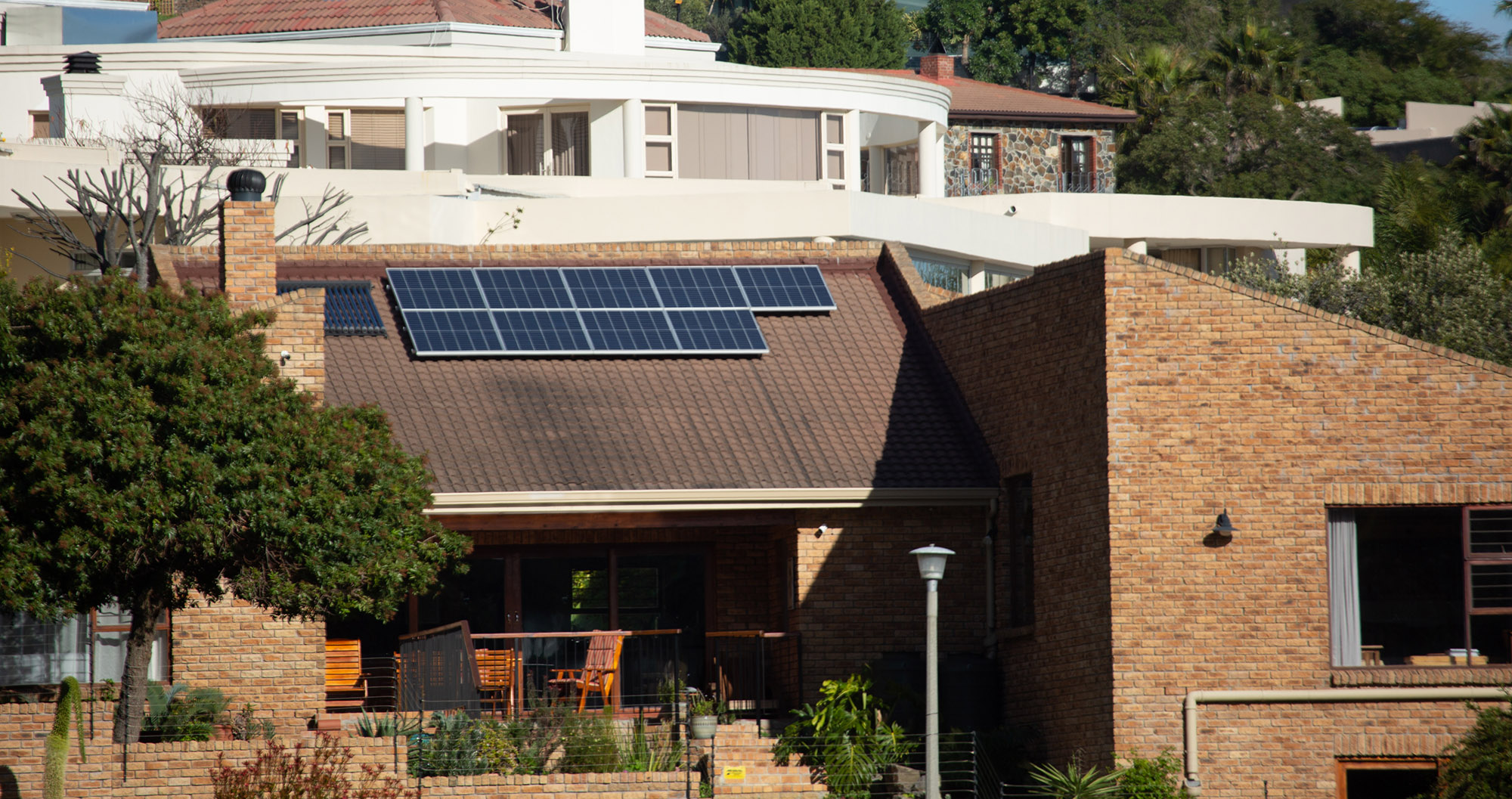The torrent of rooftop solar installations has ebbed to a trickle since Eskom suspended the nationwide rolling blackouts known as “load shedding” in late March, according to data tracked by the state-run power utility.
This arresting trend underscores the point that when the South African state fails, private businesses and households step up to the plate. But when it actually delivers reliable services, the private sector – in this case, mostly households – redirects capital to other uses.
According to Eskom’s latest weekly system status reports, the installed capacity of solar power in South Africa at the end of July amounted to 5,790.5MW. On the Eskom site, it says rooftop PV or photovoltaics, but it actually also refers to private installations on the ground used for self-generation.
At the end of December last year, the total stood at 5,203.7MW, meaning there was a roughly 11% increase in the first six months of 2024.
This is a dramatic slowdown from the first six months of 2023, the year in which rolling blackouts reached their highest levels.
During the period from January to June, installed rooftop solar capacity surged 71% to 4,411.50MW at the end of June from 2,573.30MW at the end of December 2022.
And the slowdown has become pronounced since the suspension of the national blackouts in late March. In April, May and June this year, only 350.6MW of rooftop solar was installed. Over the same three-month period in 2023, that number reached almost 1,170MW.
The recent slowdown in the pace of the solar scramble stems mostly from households and small businesses.
“The portion of new generation capacity coming from the residential and commercial sectors is likely to drop because of the drop in load shedding,” Chris Yelland, an energy analyst and MD at EE Business Intelligence, told Daily Maverick.
This is clearly bad news for many of the smaller businesses that cropped up to meet this initial rush. But it hardly signals the end is nigh for SA’s renewable energy drive.
“For the bigger projects, the pipeline is only just starting now, so we are going to see more and more of this coming to the grid,” Yelland said.
According to data compiled by Operation Vulindlela, an initiative of the Presidency and the National Treasury to support economic recovery, total private sector utility-scale renewable energy projects now number more than 130, amounting to approximately 22,500MW, with an estimated investment value of R390-billion.
About 70% of these are related to mining, and although the sector has been in decline, it is one area where it is investing heavily.
Key growth rates in retail trade sales at constant 2019 prices

Household convenience and business needs
For residential households, rooftop solar is mostly a matter of convenience to avoid the disruptions caused by what, until a few months ago, was the frequent loss of power for hours at a time. Many people in the post-Covid era are still working from home and need a reliable power supply.
Saving in the long run is also a factor, but that takes a long time given the costs of installation. As for the “going green element”, it’s probably the case that few households have gone the solar route to “save the planet”. Solar panels also have a carbon footprint, including the process of mining the metals to build them, among other things.
But for bigger businesses, notably in power-intensive sectors such as mining, Yelland noted these two factors are the key drivers: Eskom’s escalating costs and the need to decarbonise their production footprint. Ninety percent of Eskom’s power is still generated from coal.
Big South African businesses need to decarbonise to remain globally competitive as key markets such as the European Union impose punitive tariffs on products such as iron and steel, which have a heavy carbon footprint in their production profile.
Investor pressure in an age when so-called ESG – environmental, social and governance – concerns are all the rage is also reshaping corporate culture on this front.
And steeply rising power costs for energy-intensive industries is prohibitive. With a big project, the return on the buck is much faster than it is for a household.
When Gold Fields launched its Khanyisa solar plant at its South Deep mine in western Gauteng two years ago, it estimated at the time that the R715-million investment would translate into cost savings of R123-million a year.
Harmony Gold has estimated that solar projects will save it R425-million a year in electricity costs.
So even with Eskom’s improved performance, the swing to solar and other sources of renewable energy in SA is expected to be maintained and to accelerate. DM
This story first appeared in our weekly Daily Maverick 168 newspaper, which is available countrywide for R35.
You may write a letter to the DM168 editor at heather@dailymaverick.co.za sharing your views on this story. Letters will be curated, edited and considered for publication in our weekly newspaper on our readers’ views page.






